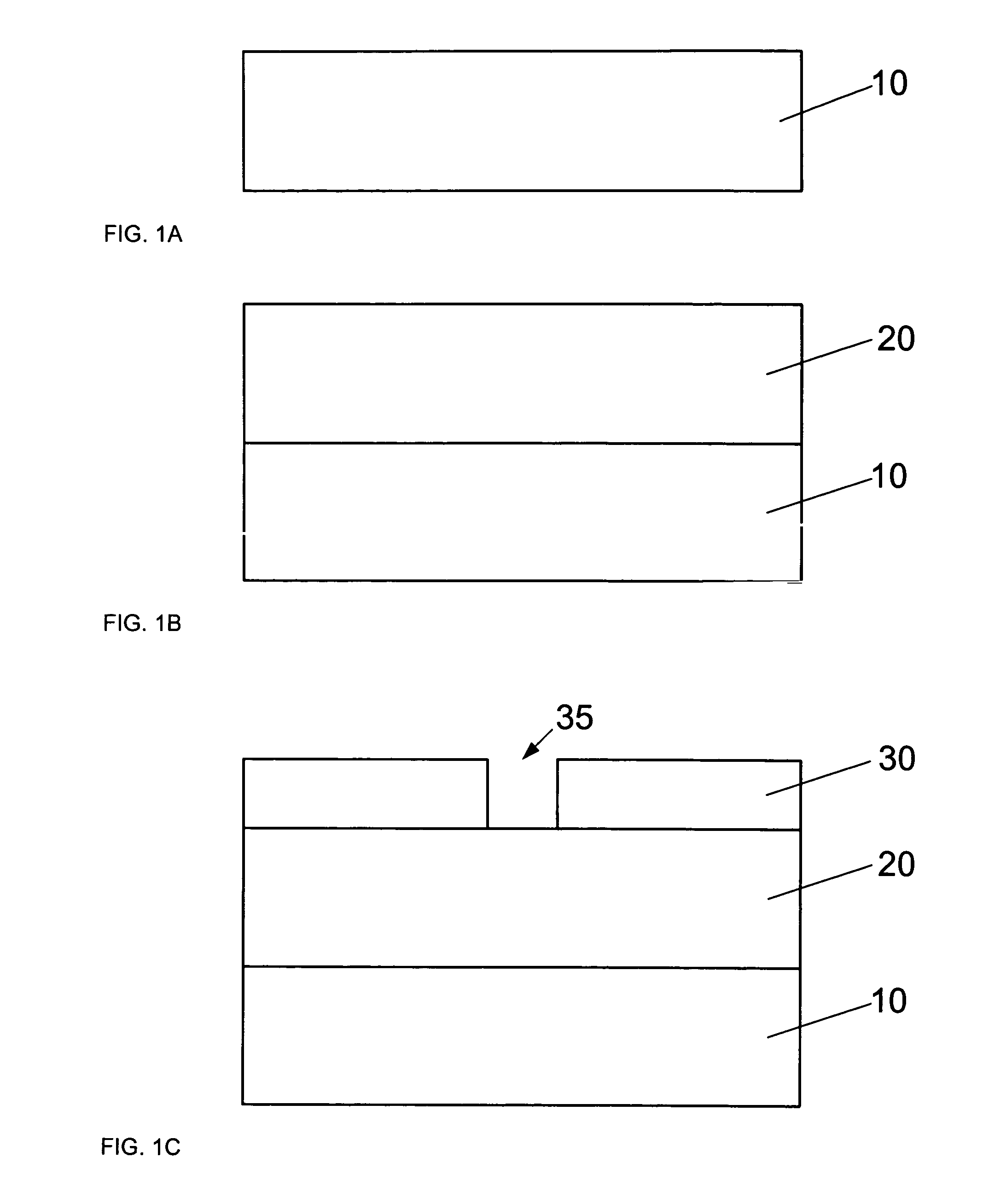Method and system for treating a dielectric film
a dielectric film and treatment method technology, applied in the direction of electrical equipment, semiconductor devices, semiconductor/solid-state device details, etc., can solve the problems of poor adhesion of the barrier layer to the dielectric film, the interconnection delay is a major limitation factor, and the film is less robust than the more traditional dielectric layer,
- Summary
- Abstract
- Description
- Claims
- Application Information
AI Technical Summary
Benefits of technology
Problems solved by technology
Method used
Image
Examples
Embodiment Construction
[0031] Referring now to the drawings, wherein like reference numerals designate identical or corresponding parts throughout the several views, FIGS. 1A through 1E present a schematic representation of a method of forming a pattern in a dielectric film and treating the exposed surfaces of the etched pattern in the dielectric film in order to perform at least one of healing, sealing, and cleaning these surfaces. Additionally, FIG. 2 presents a flow chart 100 of performing the method according to an embodiment of the present invention. As shown in FIGS. 1A, 1B, and 2, a dielectric film 20 is formed in 110 on an upper surface of a substrate 10 that may or may not include additional layers. The substrate 10 may be a semiconductor, a metallic conductor, or any other substrate to which the dielectric film is to be formed upon. The dielectric film has a nominal dielectric constant value less than the dielectric constant of SiO2, which is approximately 4 (e.g., the dielectric constant for th...
PUM
 Login to View More
Login to View More Abstract
Description
Claims
Application Information
 Login to View More
Login to View More - R&D
- Intellectual Property
- Life Sciences
- Materials
- Tech Scout
- Unparalleled Data Quality
- Higher Quality Content
- 60% Fewer Hallucinations
Browse by: Latest US Patents, China's latest patents, Technical Efficacy Thesaurus, Application Domain, Technology Topic, Popular Technical Reports.
© 2025 PatSnap. All rights reserved.Legal|Privacy policy|Modern Slavery Act Transparency Statement|Sitemap|About US| Contact US: help@patsnap.com



